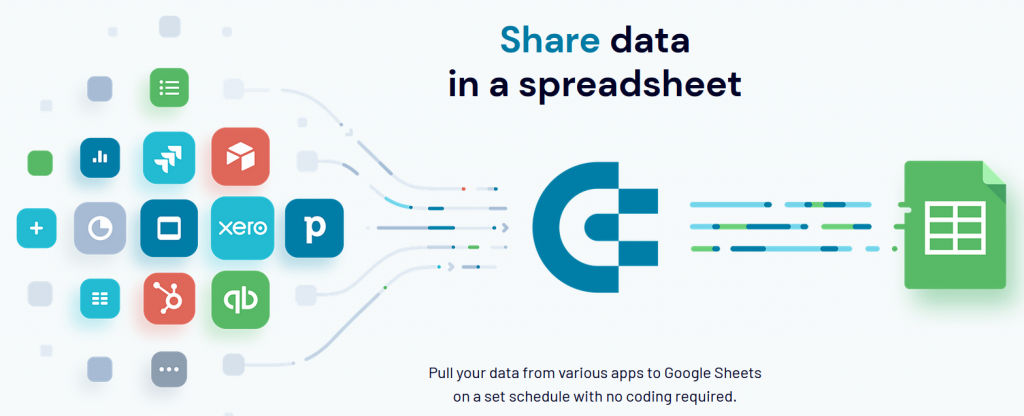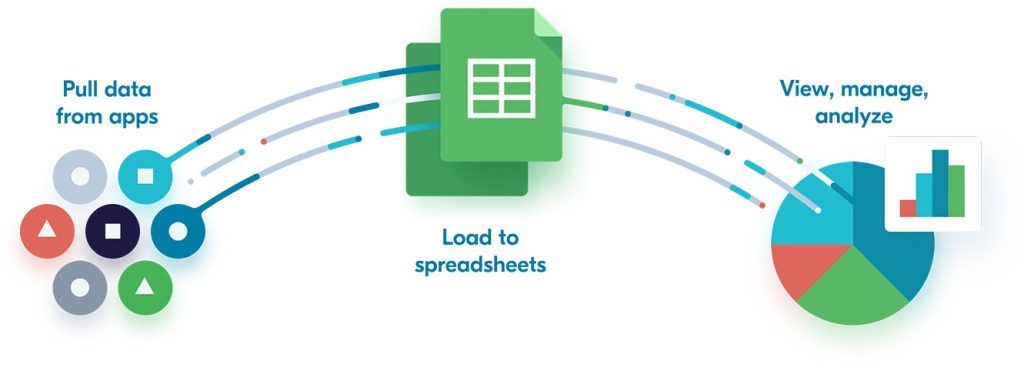Among the many things that picked up steam in the WFH era is automation. Why should one be spending countless hours doing repetitive tasks? And there are several SaaS software that are aiming to solve that need, right from the likes of Zapier to Integromat. But what if you’re looking for a simple tool to import data from Google Sheets? Enter Coupler.io, a product launched by Railsware, that’s also behind the software like Mailtrap. Launched last year, Coupler.io has become the go-to option for importing data from multiple places to one. We managed to catch up with Olexander Paladiy, Product Owner at Coupler.io to know about its inception, the experience of launching a product amidst the pandemic, and what’s in the future, among other things.
Read: Interview with Sergey Korolev, Managing Director at Mailtrap

PS: The interview has been edited for the sake of brevity.
Table of Contents
1) Before we talk about Coupler.io, could you share your journey into the world of SaaS?
I’ve been working as a software engineer after the university. I have a technical background and also finished my masters degree in the software industry. From the very beginning, I was working in the development field and in particular, in web development. I’ve been a part of Railsware for more than a decade.
Initially, I was working as a software engineer and later, I started to invest in creating products. That’s how I switched to the role of a product owner.
2) What gaps did you see in the market for launching Coupler.io?
Railsware is a data-driven company. We do a lot of automation in our processes since the company is managed by engineers, and we don’t like repetitive work. And engineers monitor all aspects of the company by using thousands of Google sheets to know the status of the product, various processes, and so on. To manage that, we use different software and even tried a few different alternatives. But none of them were perfect. So, the problem is that if you want to know the picture of your company, the data is stored everywhere. Like some of the accounts in data are stored in one place, then the transactions data is stored in another place. Similarly, the product management data is stored in some other place, and so on. We, at some point, started to develop some scripts that were importing data from different services to Google sheets. This was the push for us because we didn’t found a perfect way, and we decided to make it on our own.
This was the first step for the product launch. It started from how we can automate to bring various data points at Railsware to one place. Seeing the success internally, we decided to release just a small add-on publicly that imports data just from Airtable to Google Sheets. We called this experiment Airtable Importer. It can still be found on Google, but we’ve tried to hide it after the Coupler release. It was a basic prototype that does just one input from the one service. We also had a paid version, and we got some customers even without investing money in any marketing, which validated our idea. Considering Airtable as a service was growing, and there wasn’t any alternative that lets the user import data from it and does additional analysis. This was the validation we needed, and based on this, we started developing Coupler with support for more services than just Airtable.
3) Could you tell us about Coupler.io’s evolution since its launch?
Coupler.io started on Google Marketplace as an Add-on with the single destination, Google. And we started to use it internally. It helped us to validate all those services that integrate one application with the other. The main tricky part is that it might be fragile because it depends on other services, and that could affect the stability of the product. And we use Google Sheets heavily internally, we wanted to find gaps to make a robust product. That’s because, at this point, we already had a goal to release the product publicly. During the development, we also analyzed the market. There were a couple of players, but we found them to be really expensive. That means, small companies won’t be able to afford them.
Once we moved to close beta, we started doing customer development. We started inviting people from Airtable Importer. We already had the customer base, and we showed them our UI, and started interviewing them on what kind of data sources they use, their use cases, and so on.
After this, in March 2020, we released Coupler.io. Worth noting that it was still a marketplace add-on. We also started investing in the web tool. This version was launched this year, and it’s still being refined to make it more smooth. Currently, along with Google Sheets, users can also import data from Google BigQuery.
4) Unlike most software startups, Coupler.io was incubated within a larger company Railsware. What were the advantages of the same?

The first advantage is having an experience, because Railsware is doing consultancy for decades. We’ve been working on a lot of different products. We have an established set of processes for software development. We kind of position ourselves as a product studio that helps our clients to build the product and resolve product needs. Hence, it’s a great place for us to train our muscles and get the experience.
Most startups learn by their own mistakes. We did it as well, but we had already experienced a lot. There are a lot of successful cases for us to take inspiration from as well. For example, one of our biggest clients is Calendly, which has started from just a few Railsware engineers.
As part of Railsware, we also had the processes around how to hire people, how to find talented engineers, various aspects of marketing, and more. We could also do things simultaneously — improving the processes in the company, and doing optimizations so that we could release the product in the market.
5) Could you share how many customers do you have now? What’s the split between users and businesses using Coupler.io?
Coupler.io is a young product. We have around 0.5 million installs on Google Marketplace. However, do note that this is the number of installs and not the number of users who’re using it. The real number of users is much smaller, and we have around 3,000 active users that are using this product daily. We’re also getting around 100 signups every day.
With regards to the split, we know the split between Gmail and non-Gmail accounts, and we can assume the latter to be the company accounts. The split is 50:50. As mentioned earlier Coupler.io is aimed at small and medium businesses. But at the same time, we’ve been able to get some big names within our active clients such as Uber and Air Asia. Most of their use cases involve getting the data from multiple data sources to their dashboard. Coupler helps them to optimize the operation, and helps to monitor the important metrics. Later, such data from Google Sheets of BigQuery could be sent to BI tools like Tableau.
As far as paid users are concerned, around 10 percent of our userbase are paying. And it’s growing quite fast.
6) There are quite a few tools that are aiming to provide spreadsheet automation. What makes you stand out?
We are focusing on small and medium businesses as well as startups at this point. And such tools are really expensive. They are charging based on the number of customers, and our billing model is much affordable. We want the users to pay for the value they get, i.e. how fresh their data is and not how many people are using it. We’re trying to teach people how to use Google Sheets, what metrics to focus on, etc.
Coupler.io also stands out due to the extensive support it offers. A lot of products don’t offer free support, while others don’t respond correctly. We try to help each and every customer, even if their problem is not within our purview. We always figure out what’s their use case and the end goal they’re aiming to achieve.
We are also providing pre-onboarding calls to our customers. We try to dive deep into their business area and teach them. So, some of our clients are growing together with us. For instance, we have a guy from Brazil who has a fresh food delivery company. They recently witnessed huge growth because delivery companies are being used heavily in the COVID time. He started from just a small amount of data and automated all his operational, business analysis using Coupler and Google Sheets. This is quite inspiring for the team to continue improving the product.
I’ve already mentioned that along with Google Sheets, we also have support for BigQuery. We are no working on supporting the Excel destination.
7) Could you shed a light on your marketing strategy?
We have a huge focus on high-quality content. We believe that the content is the core of a lot of products, and we are trying to invest in quality. We aim to create content that helps people to resolve their needs.

One part of the marketing strategy is to leverage marketplaces. We started from the Google Marketplace, and it has helped us get a lot of customers. Since Coupler.io is about connection, we are now intending to go on different marketplaces such as Atlassian.
8) What’s next for Coupler.io? Any new features or integrations that you are working on?
I’ve already stated about the support for Microsoft Excel. We’re also constantly listening to what our users are asking for. A lot of them are asking about working with data to filter it, do some analysis, and so on. We’re planning to research this area and build some prototypes to run experiments with a limited set of customers. At the same time, we are constantly working on exporting new sources and destinations. We have the model that helps us prioritize the other sources that should be connected to Coupler.io.
9) What has been your experience in launching and building a product amidst the pandemic?
There are two aspects to this: one is about the organization and the other is about the product. For the former, nothing has changed as such because Railsware has always been a remote-friendly organization. So, it didn’t hurt our processes at all. Of course, we do miss the socializing part or meeting with each other, but the work didn’t get affected.
From the product perspective, we’re still small. It’s hard for us to gauge the difference of how the response would’ve been in the non-pandemic period. Hence, it’s hard to predict whether Coupler.io got affected or not. What we could see is that it’s certainly changing our priorities for different integrations. For example, due to the rise of e-commerce in the past 15 to 16 months, Shopify integration became a priority.
10) What are your favorite SaaS software out there?
One product that’s been life-changing for me is Google BigQuery. The other is Figma, which makes it easier for multi-user collaboration for design.






